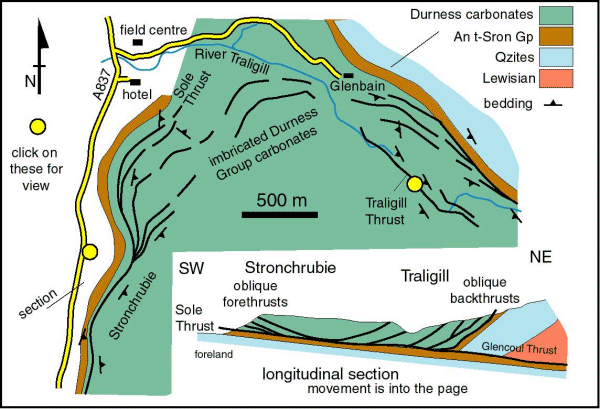Inchnadamph

The ground around Inchnadamph is dominantly limestone country with cave systems that are important for Quaternary climatic reconstructions. The limestones of the Durness Group are repeatedly imbricated and thickened by thrusts. The best places to see these structures are at the two small Geological Conservation Review sites, Stronchrubie Cliff and Traligill Burn. Although these locations are surpassed as examples of imbricate thrusts elsewhere in NW Scotland, historically they have been important for the many geological visitors to Assynt, not least because of their ready accessibility to the Inchnadamph hotel.
The thrust structures exposed in the carbonates of the Durness Group to the south and east of Inchnadamph represent duplexes detached along the Sole Thrust and accommodating displacements arising from the Glencoul Thrust. The Stronchrubie Cliff provides an insight into the internal architecture of bedding and thrusts within the lower part of a duplex while the Traligill site provides access to a thrust. These localities together with the nearby GCR site at Skiag Bridge, are important representatives of the most western, structurally-lowest, imbricate structures in the Assynt. The area is critically important for understanding the three dimensional geometry of these imbricate structures and their relationship to the major Glencoul Thrust. These geometries are generally important for elucidating how displacements transfer across thrust systems.